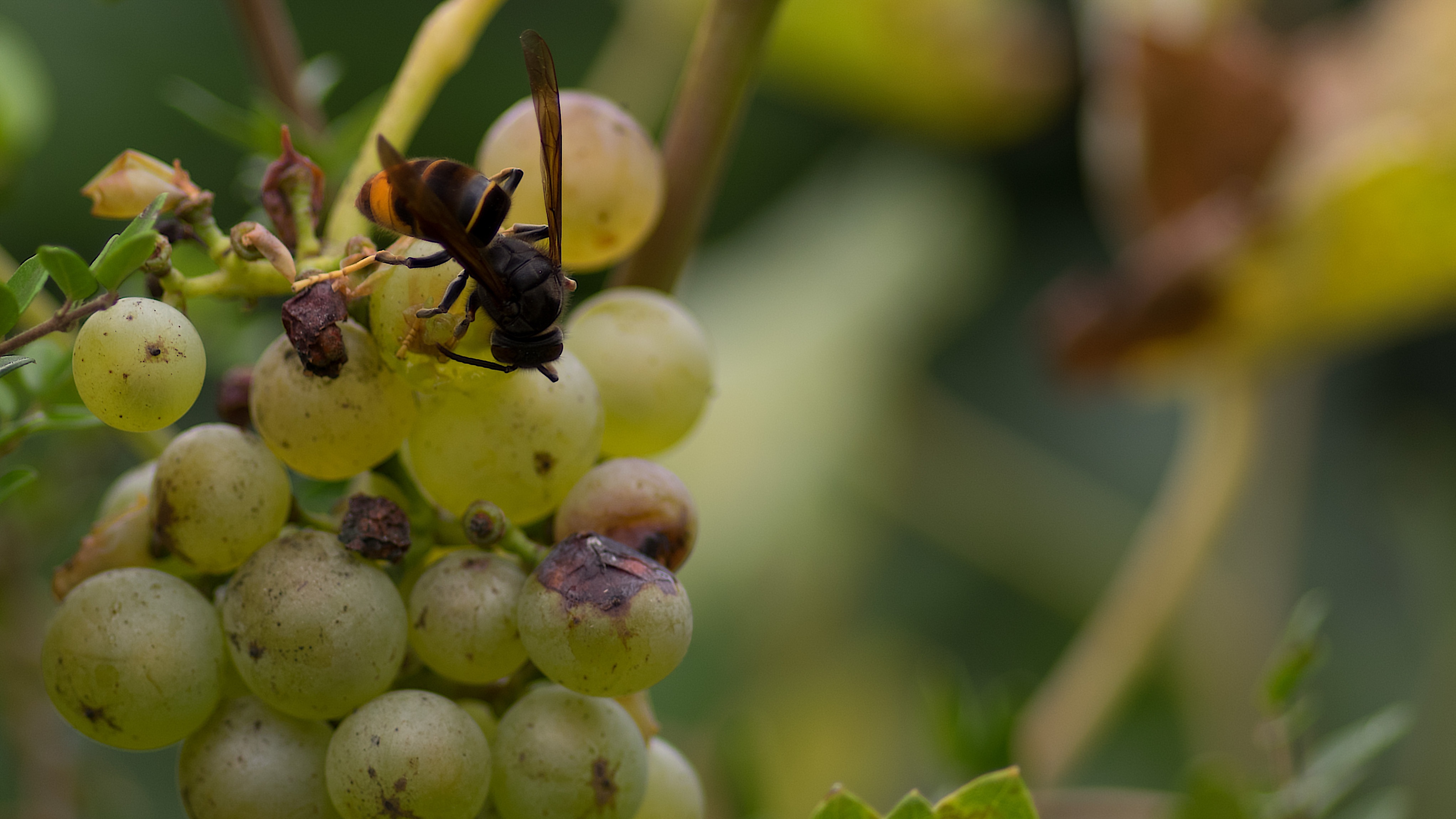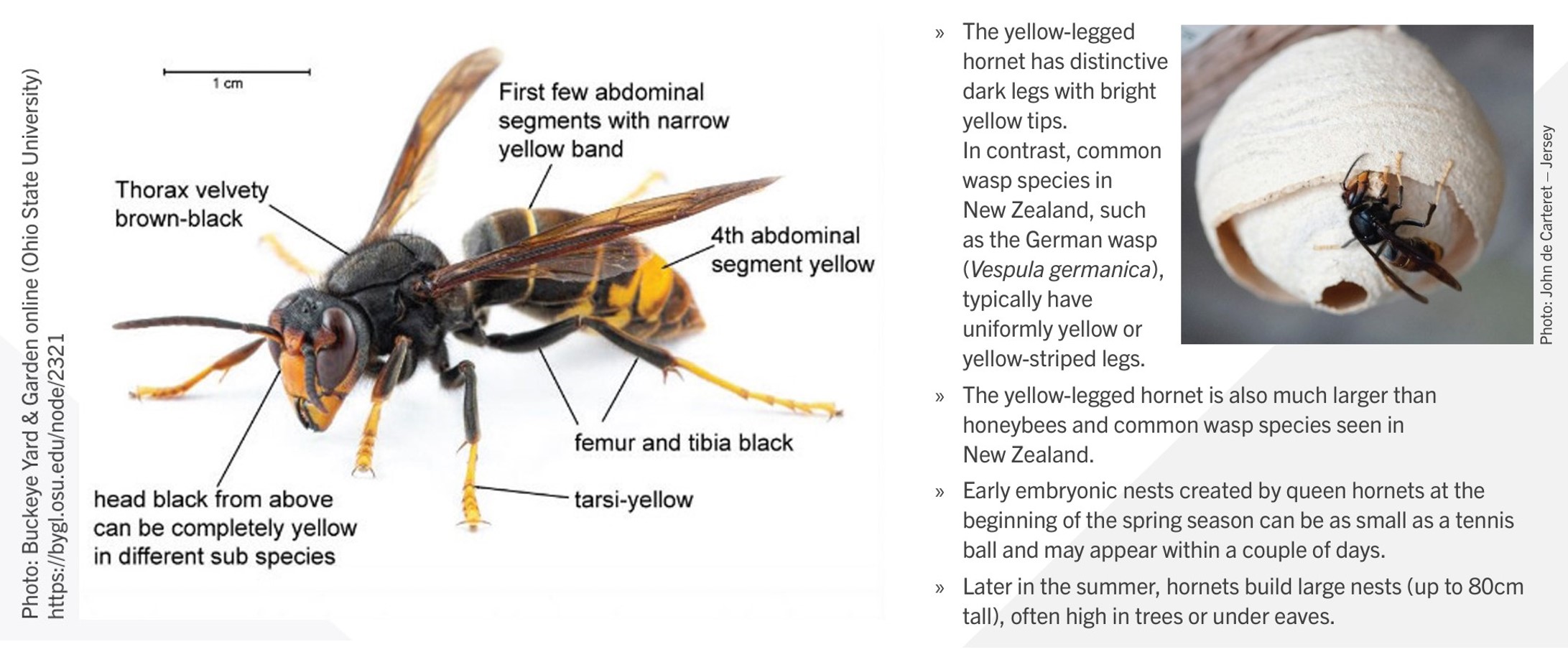In mid-October 2025, Biosecurity New Zealand confirmed the detection of yellow-legged hornets (Vespa velutina) in Auckland’s North Shore. This invasive species, native to Asia and widespread in Europe, poses a serious biosecurity threat because it preys on honeybees and other pollinators critical to agriculture and ecosystems. It also has a painful sting and can damage fruit, including grapes, by feeding on ripe berries.
Impacts on Viticulture
In Europe, particularly in north-western Spain (Galicia), the yellow-legged hornet has become a minor but increasing pest in some vineyards. Hornets feed on ripe grapes late in the season, and while damage is usually localised to areas with high hornet density, it can reduce yields in individual vineyards. Overall, impacts on regional wine production remain limited. Current evidence suggests V. velutina is an occasional rather than widespread pest of grapes in affected regions.

What does it look like?
The yellow-legged hornet has distinctive dark legs with bright yellow tips. It differs from the already established common wasp species in New Zealand, such as the German wasp (Vespula germanica) which typically have uniformly yellow or yellow-striped legs. The yellow-legged hornet is also much larger than honeybees and common wasp species seen in New Zealand.
Yellow-legged hornets build large nests (up to 80 centimetres tall), often high in trees or under eaves. Early embryo nests created by queen hornets at the beginning of the spring season can be as small as a tennis ball and may appear within a couple of days (German wasp nest looks similar at the early stages of development).



MPI Response
Biosecurity New Zealand has launched an intensive eradication programme, which includes:
• Surveillance: traps deployed in targeted areas; daily checks underway.
• Ground searches: Visual inspections of trees, roof eaves, and other nesting sites.
• Technical Advisory Group: Experts from NZ and overseas advising on eradication strategies.
• Public awareness: Media campaigns, leaflet drops, and encouraging reporting to 0800 809 966.
• Goal: Eradication while numbers remain low to protect key sectors.
What You Can Do!
Given that the incursion is still localised, there is still a window in which the industry can support surveillance and reporting efforts to minimise the risk of spread.
• Stay vigilant:- Report any suspected hornets or nests with clear photos or specimens.
• Share awareness:- Use MPI’s printable factsheets and identification guides.
• Support eradication:- Industry collaboration is key to preventing establishment.
• Communicate:- Inform neighbouring growers, beekeepers, contractors, and service providers.
• Report any sightings:- Use the online form at report.mpi.govt.nz or call the exotic pest and disease hotline: 0800 809 966.
• Do not:- attempt to remove or destroy nests yourself because disturbing them may spread the hornets and hinder control.




